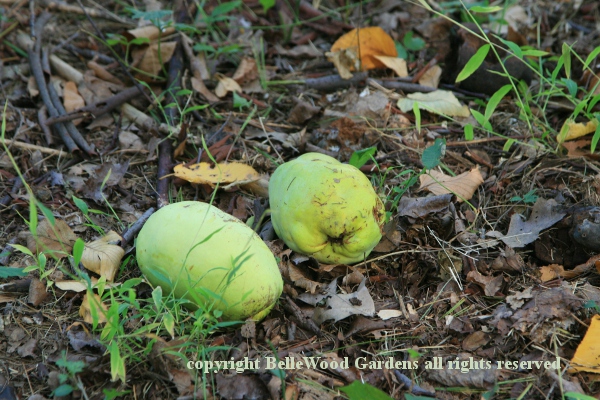
.
If you have any comments, observations, or questions about what you read here, remember you can always Contact Me
All content included on this site such as text, graphics and images is protected by U.S and international copyright law.
The compilation of all content on this site is the exclusive property of the site copyright holder.
I happen to be very fond of quinces. These days if the supermarkets have some available they are expensive when you do find them. I asked at the family orchard near me and was told that they'd rather plant another peach tree. Quinces wouldn't bring the same return. So I forage. Sort of. There's a place (won't tell you where!) with a couple of Chinese quince trees, Pseudocydonia sinensis. I'm allowed to gather the fallen fruit.

Today's presentation at the Bouman Stickney Farmstead has Susan Plaisted of Hearth to Home Cookery with a new presentation about "Quinces - the Dutch Way."
An aside: Just from curiosity I asked my friend Carla, who lives in Leiden, about quinces, kweepeers in Dutch. She wrote back and told me that " Quinces are not very popular here, but real interested gardeners do have a tree in their garden . . . Usually people make jelly, quite nice! And there is a famous Spanish recipe for membrillo: you need a pan with a very thick bottom and you have to cook the quince + sugar for hours (and hope that it will not stick to the bottom of the pan. You can then put it out of the pan and make cubes of it, they look like toffee and are very delicious."
So off I go to Bouman Stickney Farmstead, to learn about cooking with quinces in an historical Dutch manner.
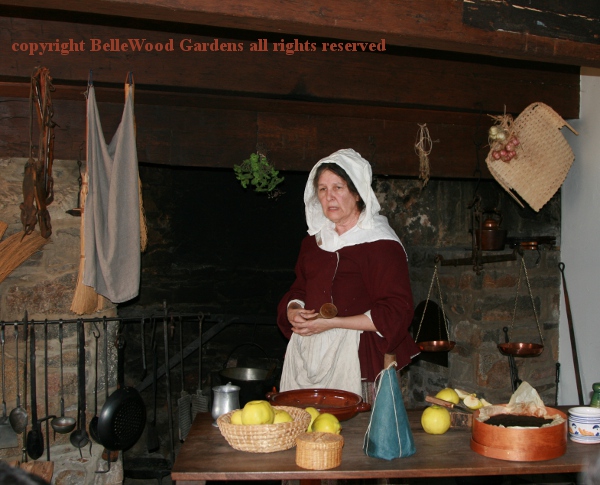
Susan has a table full of quinces. I think this is the cultivar, Pineapple, or so it looks to me. Apparently she can find generous quantities at a local farmers market in Bucks County, Pennsylvania.

A cone of sugar wrapped in blue paper, quinces, and quince "cheese"
wrapped in paper and protected in a splint basket / box.
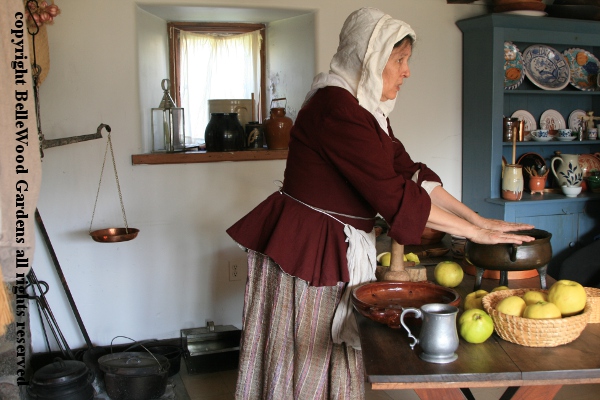
Quinces, Susan explains, take a very long time to cook.
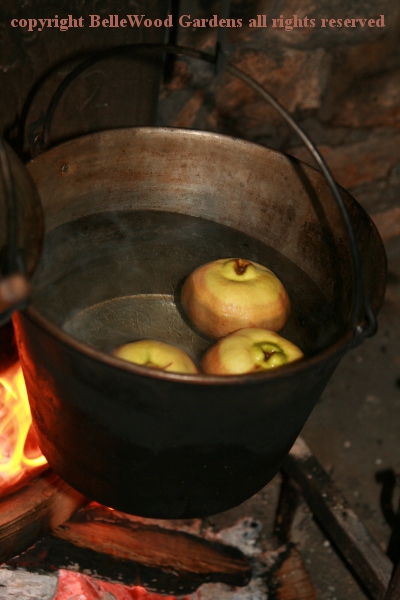
She actually began simmering these yesterday
as whole fruit - peel, core, and all.
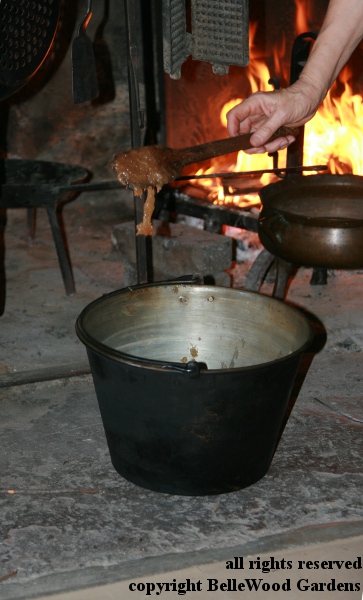
High in pectin, quince make a fine marmalade. A housewife's skill would be shown if she could make both a white quince marmalade (here dripping off a spoon) and red marmalade of quinces.
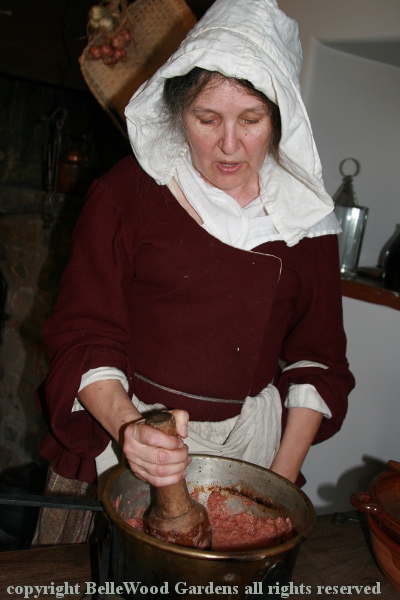
Once cooked, the quinces must be mashed. 17th / 18th century style
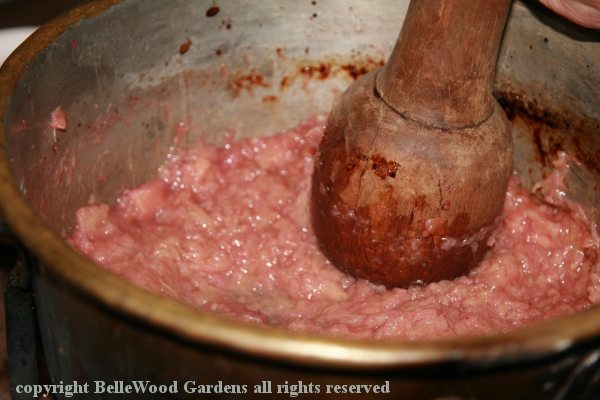
it would be with a wooden pestle.
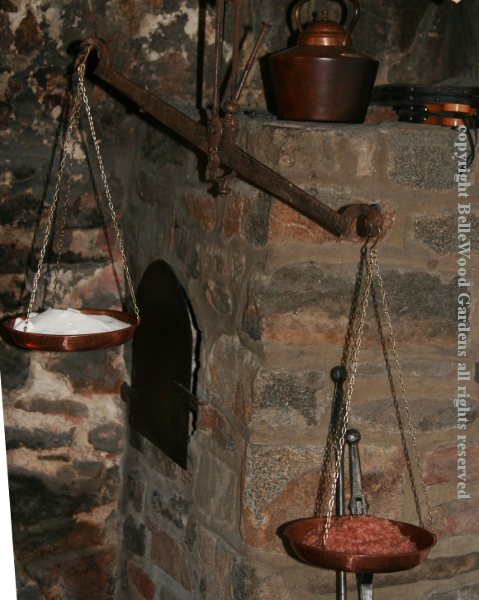
For a marmalade the balance should be
2 parts sugar to 3 parts mashed quince.

A informative, entertaining presenter and an unfamiliar fruit
makes for an interesting open hearth cooking demonstration.
Back to Top
Back to November 2016
Back to the main Diary Page